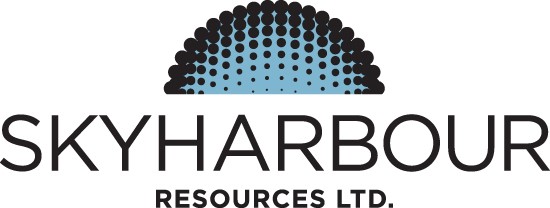Oil blocks located in Cudi-Gabar Oil Petroleum Province proximate to recent discoveries.
The Cudi-Gabar province is central to an active petroleum system extending up from Iraq and Syria, where Turkiye’s portion contains several major oil fields including Sehit Esma Cevik, discovered in 2022 and Sehit Aybuke Yalcin, discovered in 2023.
The Eastern Block (BlockM47C3, C4) is approximately 15 km by 30 km in size and is approximately 12km from the newly discovered Sehit Aybuke Yalcin Oil Field at Mount Gabar, which contains a reported 1 billion barrels Original Oil in Place (“OOIP”)[1] based on a discovery well which encountered a 162 meter thick reservoir with 41 API gravity oil. The Sehit Aybuke Yalcin Oil Field currently produces 10,000 barrels of oil per day (“bopd”) which has been targeted to rise to 100,000 bopd1. The Eastern Block is also 11 km from the Sehit Esma Cevik Oil Field, which contains a reported 250 million barrels OOIP[2]. The Sehit Esma Cevik Oil Field discovery was announced in December 2022 at which time 5 wells were producing 5,350 bopd and has been reported in May 2023 to be producing about 10,000 bopd (2).
Blocks M46C,D (the “Western Blocks”) farm-in are a combined area of approximately 30 km by 60 km and located approximately 30 kilometers west of the Eastern Block. The northern boundary of the Western Blocks is approximately 5 kilometers distance from the Raman Oil Field discovered in 1940 and which contains a reported initial 615 million barrels of OOIP[3]. The West Raman Oil field discovered in 1961 initially contained a reported 1.85 billion barrels of OOIP with peak production of 13,000 bopd(3). Additionally, there are numerous other oil fields surrounding these two blocks.
No economic discoveries have yet been made on the Oil Blocks pursuant to the farm-in by Trillion and there is no guarantee that any oil discovery will be made.
Trillion’s farm-in obligations (Sole Exploration Phase – 100% cost) are 351 kilometres of 2D seismic followed by drilling four oil exploration wells. The Sole Exploration Phase is expected to cost Trillion about US$16 Million. The Joint Exploration Phase will have six additional exploration wells drilled, but Trillion only pays 50% of the cost. A summary of the anticipated exploration work program is as follows:
- During 2023, approximately 351 kilometers of 2D seismic will be shot for a cost of approximately US$ 4.0 Million – Sole Exploration Phase – Trillion 100% cost
- During 2024, four exploration wells are expected to be drilled for a 100% total cost of approximately US$12 Million – Sole Exploration Phase – Trillion 100% cost
- During 2025, three additional exploration wells are expected to be drilled for a 100% total cost of approximately US$ 9.0 Million – Joint Exploration Phase – Trillion 50% cost
- During 2026, three additional exploration wells are expected to be drilled for a 100% total cost of approximately US$9.0 Million – Joint Exploration Phase – Trillion 50% cost
Trillion will be the operator of these works and future development. The exploration term for the Western Blocks extends until May 17, 2027. The exploration term for the Eastern Block extends until December 16, 2028.
Arthur Halleran CEO of Trillion stated:
“The oil field trend is expected to run through the northeast half of the Eastern Block which has yet to be explored. We are excited about the exploration opportunities considering recent discoveries made in the province proximate to the Eastern Block. Wells drilled to date in the southwest of our targeted area have good to very good oil staining and asphalt in the rocks. This indicates a working petroleum system on the Eastern Block where oil has been generated and migrated within the system. There are 5 different Mesozoic reservoirs and 2 different Paleozoic reservoirs that have over 15 oil fields of note in surrounding blocks. This indicates oil generation which has migrated in vast amounts and as such, our exploration focus will be looking for traps. When you are surrounded by large, discovered oil fields, you know you are in elephant hunting grounds.”
This farm-in opportunity developed as Trillion’s Türkiye subsidiary Park Place has a reputation of being a very technically competent company that executes its work programs with a high degree of success.
The definitions used in preparing this news release are those contained in The Canadian Oil and Gas Evaluation Handbook maintained by the Society of Petroleum Evaluation Engineers (Calgary Chapter) (“COGEH“) and National Instrument 51-101 – Standards of Disclosure for Oil and Gas Activities.
Trillion Energy is focused on natural gas production for Europe and Türkiye with natural gas assets in Türkiye and Bulgaria. The Company is 49% owner of the SASB natural gas field, one of the Black Sea’s first and largest-scale natural gas development projects; and a 19.6% (except three wells with 9.8%) interest in the Cendere oil field. More information may be found on http://www.sedar.com, and our website.
[1] https://www.reuters.com/article/turkey-energy-oil-idAFL1N3710DC
[2] https://www.tpao.gov.tr/file/2212/en-sehit-esma-cevik-bilgi-notu-114363997195a6d60.pdf)
https://www.tpao.gov.tr/file/2305/kamuoyu-duyurusu-eng-13416452d270cb2e3.pdf
[3] Bati Raman Field Immiscible CO2 Application: Status Quo and Future Plans. Secaeddin Sahin, Ulker Kalfa, and Demet Celebioglu, TPAO.




